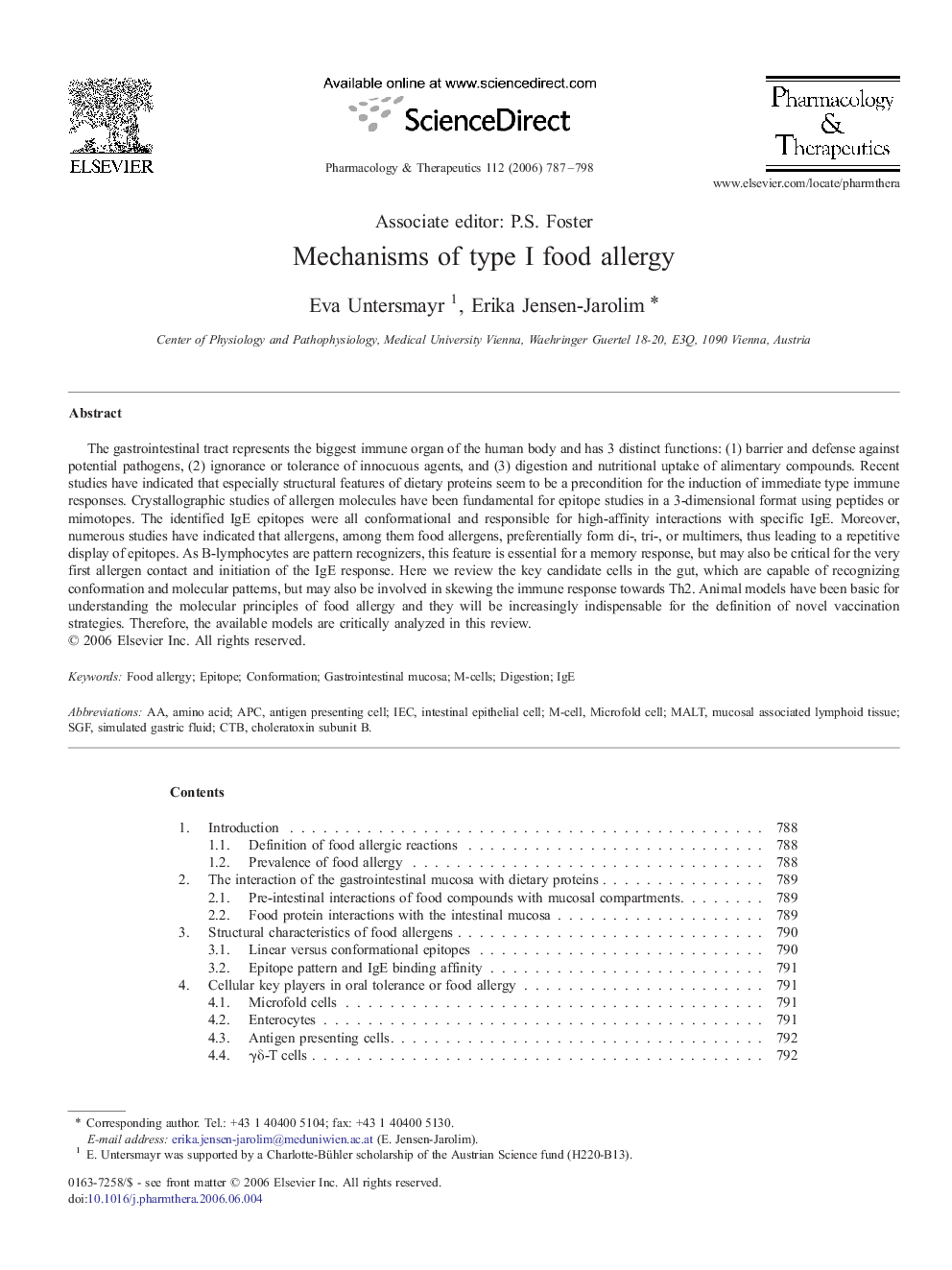| Article ID | Journal | Published Year | Pages | File Type |
|---|---|---|---|---|
| 2564040 | Pharmacology & Therapeutics | 2006 | 12 Pages |
The gastrointestinal tract represents the biggest immune organ of the human body and has 3 distinct functions: (1) barrier and defense against potential pathogens, (2) ignorance or tolerance of innocuous agents, and (3) digestion and nutritional uptake of alimentary compounds. Recent studies have indicated that especially structural features of dietary proteins seem to be a precondition for the induction of immediate type immune responses. Crystallographic studies of allergen molecules have been fundamental for epitope studies in a 3-dimensional format using peptides or mimotopes. The identified IgE epitopes were all conformational and responsible for high-affinity interactions with specific IgE. Moreover, numerous studies have indicated that allergens, among them food allergens, preferentially form di-, tri-, or multimers, thus leading to a repetitive display of epitopes. As B-lymphocytes are pattern recognizers, this feature is essential for a memory response, but may also be critical for the very first allergen contact and initiation of the IgE response. Here we review the key candidate cells in the gut, which are capable of recognizing conformation and molecular patterns, but may also be involved in skewing the immune response towards Th2. Animal models have been basic for understanding the molecular principles of food allergy and they will be increasingly indispensable for the definition of novel vaccination strategies. Therefore, the available models are critically analyzed in this review.
